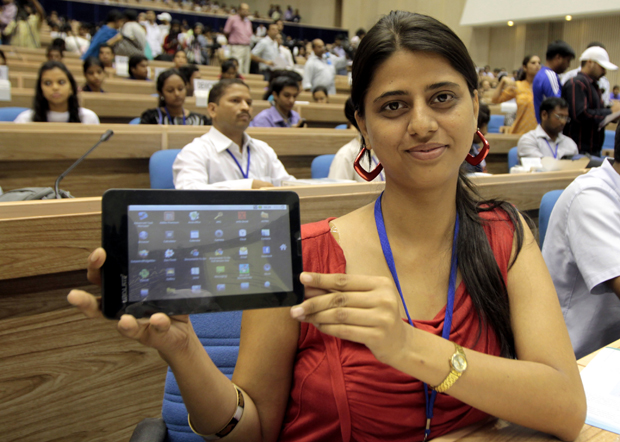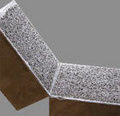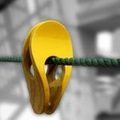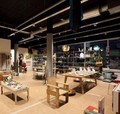5 Lessons on Building Iconic Brands at Any Scale
by: Greener Design, 2011-11-08 11:45:58 UTC
Disrupting the status quo is difficult -- but not impossible -- from within large corporations. In working to build strong, responsible companies at the bottom of the period, Blue Earth Network has gathered the following lessons that could work for anyone.

 Survey Shows European Businesses and Consumers Eager to Invest in Sustainability
Survey Shows European Businesses and Consumers Eager to Invest in Sustainability
by: Sustainable Design News, 2011-11-09 09:36:07 UTC
 A significant majority of consumers and business decision makers are increasingly eager and willing to invest in making their buildings and homes more energy efficient, according to a new survey conducted by online research organization OnePoll, on behalf of Autodesk.
A significant majority of consumers and business decision makers are increasingly eager and willing to invest in making their buildings and homes more energy efficient, according to a new survey conducted by online research organization OnePoll, on behalf of Autodesk.
The study solicited and analyzed the opinions of more than 2,000 European residents in the UK, France, Germany and Italy.
 Materials for Living
Materials for Living
by: Sustainable Design News, 2011-11-09 10:33:04 UTC
 A joint exhibition by the Associate Parliamentary Design and Innovation Group and the Associate Parliamentary Sustainable Resource Group in partnership with the Royal College of Art and Coca-Cola, Materials for Living demonstrates the future potential of sustainable materials research and its various applications.
A joint exhibition by the Associate Parliamentary Design and Innovation Group and the Associate Parliamentary Sustainable Resource Group in partnership with the Royal College of Art and Coca-Cola, Materials for Living demonstrates the future potential of sustainable materials research and its various applications.
The Royal College of Art seeks to place the investigation of material itself at the centre of their practice, developing innovative and sustainable products and solutions.
 Database Will Benchmark Thousands of Reports, GRI Says
Database Will Benchmark Thousands of Reports, GRI Says
by: Environmental Leader, 2011-11-11 07:38:18 UTC

Companies will be able to benchmark their sustainability data against information from thousands of other firms, using a database just launched by the Global Reporting Initiative. GRI said the Sustainability Disclosure Database includes data on the sustainability and environmental, social and governance (ESG) transparency of over three thousand companies. This information was previously hard to [...]
 Turning Commercial Jets into Hybrids
Turning Commercial Jets into Hybrids
by: Eco Geek Latest, 2011-11-10 18:29:02 UTC

A company called WheelTug has devised a way for commercial airplanes to run on electricity at slow speeds, much like a hybrid vehicle does.
The WheelTug system includes a pair of electric motors embedded in an airplane's nose wheel which provide power for backing the plane away from the gate and for taxiing up to 28 mph. The electricity for the motors is provided by the auxiliary power unit of the plane, a small engine located at the back of the aircraft used for running lights and the ventilation system when the main engines are off.
The auxiliary power unit uses only about half a gallon of fuel per minute compared to two gallons per minute for each of the main engines. The WheelTug allows a plane to taxi without use of the main engines and to back from the gate without the help of a diesel-fueled tug, cutting down significantly on fuel use while a plane is on the ground.
Another advantage to creating hybrid jets is that planes will spend less time on the ground since they won't have to wait for a tug. Also, by running the main engines less, engines will sustain less damage.
The company has just signed a deal to outfit 20 El Al jets with the system and hopes to get certification from European and American aviation regulators by early 2013.
via NY Times Green Blog
 Two Views of the Value of Sustainability
Two Views of the Value of Sustainability
by: Environmental Leader, 2011-11-10 06:07:08 UTC

Sustainability is all the rage as many significantly-sized companies are evaluating it to maximize economic benefits and seeing how it can fit into company plans. We in the environmental community believe that sustainability programs almost always deliver a good return on investment (ROI) because of the long-term economic benefits of reducing waste, water, energy use, [...]
 Coke Makes 100% Recycling Pledge for 2012 Olympics
Coke Makes 100% Recycling Pledge for 2012 Olympics
by: Environmental Leader, 2011-11-10 15:20:10 UTC

Coca-Cola has promised to recycle all clear plastic PET bottles used at the London 2012 Olympics, according to news reports. The company has partnered with Sita UK, the waste management partner of the London Organising Committee of the Olympic Games (Locog), and aims to recycle the materials into 80 million new Coke bottles within six [...]
 Global Action Needed by 2017 to Prevent Dangerous Temperatures, IEA Says
Global Action Needed by 2017 to Prevent Dangerous Temperatures, IEA Says
by: Environmental Leader, 2011-11-10 15:13:23 UTC

The world needs to take internationally co-ordinated action by 2017 to keep temperatures from rising to dangerous levels, the International Energy Agency said in its World Energy Outlook 2011. In the outlook paper, released yesterday, the IEA said that to keep the global temperature rise under 2 degrees C, all permissible emissions will have to [...]
 The Big Ideas Inside A New Version Of India's $35 Aakash Tablet
The Big Ideas Inside A New Version Of India's $35 Aakash Tablet
by: fast company, 2011-11-10 18:18:53 UTC
Students and professors designed the specs for Aakash, the world's cheapest tablet. Then they handed over their work to a manufacturer. Now they're working on new versions and hope one day soon to have a greater role in how the tech they dream up actually turns out.

Barely a month has passed since the release of India's "$35" Aakash tablet, but its creators already have its successor--a sleeker, more powerful low-cost tablet--ready to launch.
When the Aakash was launched in October, it was greeted with enthusiasm--what potential it holds for a developing market!--followed almost immediately by skepticism--could it possibly work for that cheap? What's the catch?
Aakash, or Ubislate 7 as U.K. manufacturer DataWind calls it, has a 7-inch screen, runs Android 2.2. It comes with a USB drive and microSD slots. Suneet Tuli, cofounder and CEO of DataWind, tells Fast Company that DataWind will follow through with their plans to sell the tablet commercially in India, at the price of Rs. 2,999, about $60 ($35 was actually the price the government paid--read on). Eventually, he hopes they'll sell upgraded versions of the tablet in the U.S. and U.K.

But the original designers of the tablet--students and professors who thought up and prototyped the first early versions of the device--are keeping their sights set squarely on the Indian market, while nurturing more ambitious plans for the next version and making low-cost technology accessible to all Indians.
The first versions of Aakash took shape at the Jodhpur, Rajasthan, campus of the Indian Institute of Technology as part of a government-backed undertaking to bring affordable computers to students in India. Human Resources Development Minister Kapil Sibal, who's been a supporter of science and tech inspired approaches to education before, has been its vocal federal front.
Prem Kumar Kalra, the professor at IIT Kanpur, began engineering the tablet in 2009 with a target price of $50. He brought his work to Jodhpur when he moved to IIT Rajastan to lead the new campus as its director. The Aakash team at IIT is now managed by Kalra, and professors Anupam Gupta and Sandeep Yadav. Together, they advise a band of about 170 students involved in various parts of the still growing project.
The hardware innards of IIT's first version of Aakash exist already, Gupta tells Fast Company. The IIT team picked parts that would meet some basic performance specs, while keeping the overall cost low. The team had a pre-manufacture proof-of-concept of the tablet by August 2010, but the university lacked the ability to mass produce it. Since the Aakash project was a government supported venture, and IIT a government university, they could only offer up the design to commercial manufacturers that met government guidelines. The tech companies could buy and use the design as is or modify it, though, as long as their final product had the necessary features and would sell at the below $50 price.
DataWind bought the design and then created their version of the tablet. According to the IIT team, it lacks the built-in speaker and video conferencing facility that the original design had. But it runs a more advanced version of Android (Froyo, or 2.2).
[youtube tSthJ7HWMNU]
Post-Oct. 5 launch, the first lot of about 500 tablets are still being tested by students. The government of India plans to buy another 100,000 tablets from the company for $35, which they will make available to students at an even lower price or for free.
Meanwhile, the IIT team is moving ahead with more advanced Aakash iterations. Aakash 2 carries “a more capable processor more memory, more onboard storage," Gupta says. It runs Android's Gingerbread OS. As with the first Aakash, the team will need to offer the design to the most appropriate manufacturing bidder. "Our designs are ready. It depends on when the manufacturer is able to take up the order and finish the next one," Gupta says. On Friday, MP Kapil Sibal indicated that the next version may be available as early as February 2012. (Though, Gupta estimates that offering up and finding a bidder for their tender takes a minimum of three months, even before manufacturing begins.)
Though IIT engineers have offloaded a significant amount of their production challenge to manufacturing partners, they continue to stay connected to the project. In the days leading up to the original Aakash launch, students at IIT tested the first few units, identifying and reporting glitches (sometimes with suggested solutions) for DataWind to fix. Sivansh, an electrical engineering major in his fourth year, tells Fast Company they found, for example, that the way DataWind had built the device caused the screen and OS to freeze when a microSD card was inserted into the tablet. After feedback from the IIT students, DataWind changed their design so that this is no longer the case.
Post-pilot launch, one IIT team is working on designing Android apps that will be free to download. Their focus is now on modifying educational apps that will run on the budget device while giving students who use the tablet the kind of access to apps that they’d have on a computer. But they’re also looking further, and are planning apps that are tailored to health care professionals and those in agriculture, lead prof Sandeep Yadav says.
The team leaders are also nurturing innovation on the hardware front. A group of students, Sivansh included, are working on creating a new chip that would be both cheap and powerful. "We think that if we have our own chip, the performance will shoot up and the price will come down drastically," Gupta says. Their goal is for future versions of the tablet will carry this chip, Gupta says.
Missing from equation for IIT is full ownership of its intellectual property--it gives up some of that by farming out manufacturing, and won't share in the commercial gains once Aakash/Ubislate hits the market. IIT director Kalra says he hopes to address the issue of ownership with future devices that are built at the university. They'd like to invite incubators and investors to start backing the do-good tech so they could see it straight through to the market.
"The long-term objective is to create an atmosphere where we don't have any company coming and hiring our students," Kalra says. "They should all become entrepreneurs. That's a goal which we want to set up on a long term." As far as how things are working out with Aakash, he says, it's just the start of many more things to come. "You can't be happy or angry in the beginning. You can just see the sun is rising, that's it."
Nidhi Subbaraman writes about technology and the world. Follow on Twitter, Google+.
[Top, homepage image: Getty Images]


 Airdrop Irrigation to transform drought-ridden areas into fertile land
Airdrop Irrigation to transform drought-ridden areas into fertile land
by: The Design blog, 2011-11-11 04:57:23 UTC
Bijendra Singh Rana:

Airdrop Irrigation SystemWith Airdrop, you’ll be able to extract water from the air until the Imperial Forces destroy your moisture farm
The Concept
Edward Linacre won The James Dyson Award 2011 for developing Airdrop Irrigation concept. This concept is a boon for the countries ailing from severe droughts and unfavorable agricultural conditions. The concept behind Airdrop is that even the driest air contains adequate amount of water molecules. These molecules can be extracted by lowering the temperature of the air till the point of condensation. Warm air is driven underground with the help of a solar powered turbine whenever wind is at its strength. As the depth increases the temperature decreases considerably.
It has been found that at a depth of two meters depth temperature decreased by 6 degree Celsius. Coiled copper pipes are used for this innovative condensation process. The water thus condensed is accumulated in an underground tank. The stored water is pumped to roots of plants with the help of sub surface drip irrigation. This system allows better irrigation that too in an automated manner. Airdrop is an easy to install, economical and sustainable irrigation system that can surely make droughts a thing of the past.
The Inspiration
The idea of developing an irrigation system for the driest places on earth came into mind of Edward when Australia witnessed the worst drought of the century. Murray Darling area in Australia experienced a 12 years drought that completely changed the entire ecosystem with severe wildlife decline and catastrophic bushfire conditions. Alarmed and shocked, Edward Linacre started looking for a solution that could help in surviving such natural calamities. The inspiration came from none other than nature itself. Edward learnt about an ingenious species of beetle known as Namib.
This beetle is found in the driest places on earth and can survive on dew that falls in early morning. It has a hydrophilic skin that collects the dew. He then started researching on atmospheric water harvesting technologies that exist today. These technologies are high-tech and expensive and Edward wanted to develop something for the rural farmer market. He suggested that even in driest of deserts around 11.5 millimeters of water can be harvested from every cubic meter of air.
Eco Credentials
The critical issue in developing this concept was the cost as it was aimed for the rural farmer market. Thus, Edward refrained from using complex and energy-intensive methods like desalination or tapping. He rather focused on the most abundant source, the air which is omnipresent on earth. This device is fitted with such components that run on renewable source of energy to cut down energy cost as well as pollution if any. Airdrop draws its power from sun through solar panels that are installed at the top of this device.
The basic structure of the device is very simple so that it could be easily installed as well as maintained by the farmers. The manufacturing was done with the help of local irrigation manufacturers and farmers. The best part is that the water can be stored underground which can be used as an emergency reserve in the times of need. It is also installed with a switch that regulates the flow of water as per requirement.
Feasibility
This is a boon for the drought ridden agricultural lands that are left barren without any water. The cost of manufacturing is low and it is based on the naturally proven and tested concept of biomimicry. Parts and material used to manufacture Airdrop comes at very affordable cost and the entire design is simple as well as easy to maintain. There are no ill effects such as noise, soil, air or any other kind of pollution. Being solar powered in nature Airdrop is a perfect fit for hot and dry areas such as deserts.
Moreover, it also relieves one from the need o monitoring and watering the crops again and again as it irrigated them bit-by-bit on a regular basis. The James Dyson Award 2011 also includes a cash amount of $14, 000 that will be spent on testing and further iterations in the basic design so that the water yield of Airdrop can be increased. The minor drawback that stands on the way of success of this device is that a large fleet of it would be required to irrigated a large farm field as one device would be able to irrigated a small area of land, otherwise, Airdrop has nothing but the best to offer.
Picture Gallery
With Airdrop, you’ll be able to extract water from the air until the Imperial Forces destroy your moisture farm
Related trends
1. Hydra

HydraAutomated home irrigation system saves water
This is an automatic home irrigation system that helps saving tremendous amount of water up to 25 percent. It is named as hydra as it looks like one. Designed by James Seddon, this device is laced with different sensors that monitor the moisture present in soil. If it finds the amount of moisture to be low it starts irrigating the garden automatically.
2. Eco Drop

Eco-DropDesigned by Seung Kim
Seung Kim designed Eco Drop that is water saving as well as automatic fertilizing device. This device also saves from underground water contamination due to chemical fertilizers. It utilizes earthworms for fertilizing and consists of worm compost bin, a feed tank, and compatible irrigation system. The earthworm juices are collected from compost bin and used along with water to irrigate the garden.
3. Cyber-Rain XCI Controller
Cyber-Rain XCI Controller is a sprinkler with a brain that can be operated via computer or even an iPhone. This device is connected with internet to monitor the weather and automatically adjusts its run time accordingly. In addition, it also sends updated irrigation schedules to help you keep an eye on all irrigation activities and water savings.
4. Condensation Irrigation Method
Condensation Irrigation Method is a combined system designed for solar desalination and water production purpose. The humid air that flows over the saline water surface is harvested using solar stills via underground pipes.













Comments by our Users
Be the first to write a comment for this item.